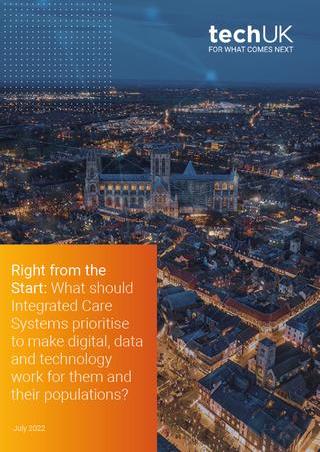Capita: Ready for virtual wards? Think again
Creating virtual wards with over 24,000 beds is a significant change for the NHS. While the point technology solutions already exist, further consideration about the broader vision is needed.
The scaling up of virtual wards represent a significant step change in the NHS’s care model. As perhaps one of the most significant shifts since the inception of the NHS, they have the potential to:
- Change the relationship the patient and their family have with the traditional care model. In the community care setting, multidisciplinary team working is commonplace, but the latest initiatives are among the most ambitious efforts to extend the traditional hospital care model into homes.
- Lead into new areas of ‘virtual’ service and then into more anticipatory or population care models. Their longer-term transformative potential is broad.
- Be key steppingstones in addressing issues with broader regional sustainability significance such as capability / demand alignment, workforce, and intractable issues like flow.
With current targets of 40 to 50 beds per 100,000 population, the scale of the ambition relative to the current NHS bed base is also significant. The scale alone demands attention.
While digital is at the heart of current transformation strategies, there is a real risk that digital is also the ‘Achilles heel’. This might be read as heresy but bear with me.
Digital conversations about virtual wards seem primarily focused on enabling remote monitoring and consultation. There are also a variety of data integration technologies that do this and allow the captured data to be shared or linked to other systems, such as Electronic Patient Records (EPR) in hospitals. Although all of this seems good, it risks not being truly transformative, or at least not being able to enable transformation in all areas.
While monitoring someone at home is transformative, for virtual wards to be successful they need to be both scalable and sustainable. This demands a wider transformation and cultural change.
A ‘traditional’ deployment would take remote monitoring technology and couple it with clinical resources. This approach without question enables pace, however, it encourages duplication. For example, do the providers in a single Integrated Care Systems have different virtual ward models or even do the providers in a multi-acute group have different models? In essence, this duplication represents an unsustainable overhead on already overstretched frontline resources.
Is it tenable to scale the ‘bed base’ by 10-20% and expect the clinical resource pool to scale in kind? A ‘point’ technology solution/model which can be traced back to National Programme for IT times is unlikely to address that.
An alternative model, delivering both scale and sustainability, is an ‘integrated’ approach. In these, models’ commonalities are sorted between service elements and those elements are ‘shared’ within an area (for example, a region). These models seek to reduce the burden of duplications and free the frontline clinical resources to focus on clinical issues. Common elements such as ‘back office’ enablers are centralised and, ideally, digitised fully. Shared elements work in partnership with local teams, integrated and embedded with each other, into a single service. Reducing duplications will enable greater scalability and sustainability, both economically and from a frontline workforce perspective.
As an IT director in the NHS once asked me, “why do software companies only talk to me about clinical activity when half my organisation is ‘non-clinical’?”.
That question was valid then and it is valid now. If more integrated models are the route to scale and sustainability, then transformative thinking needs to be wider and more comprehensive. Wider than monitoring, how are systems managing workforces, triaging consistently, scheduling, planning and optimising activity, targeting services, and managing consistency and quality while reducing unwarranted variation.
The digital demand of virtual wards is as broad and significant as their ambition - and a failure of the digital and wider transformation narrative to match that ambition is potential Achilles heel.
Enabling a scalable and sustainable virtual ward requires, demands, a broader digital vision.
Check out our new podcast and ICS report
The techUK podcast: Innovation in place-based care
In this episode we explore the concept of ‘place’ in care, the principles behind it, the impact of Covid-19 on care delivery, prospects for innovation following the introduction of Integrated Care Systems, examples of industry best practice, and where listeners can go to learn more about ‘place’ and innovation in care.
We were joined by Helena Zaum (Social Care Lead at Microsoft and Chair of techUK’s Social Care Working Group), Scott Cain (Associate at the Connected Places Catapult) and Hannah Groombridge (Healthcare Engagement Manager at Person Centred Software).
This discussion forms part of techUK’s Digital Place Week 2022 activity and features on our recently-launched Social Care Innovation Hub.

Read techUK's latest flagship report, released on Thursday's 'Health and Wellbeing' day:
Right from the start: What should Integrated Care Systems prioritise to make digital, data and technology work for them and their populations?

